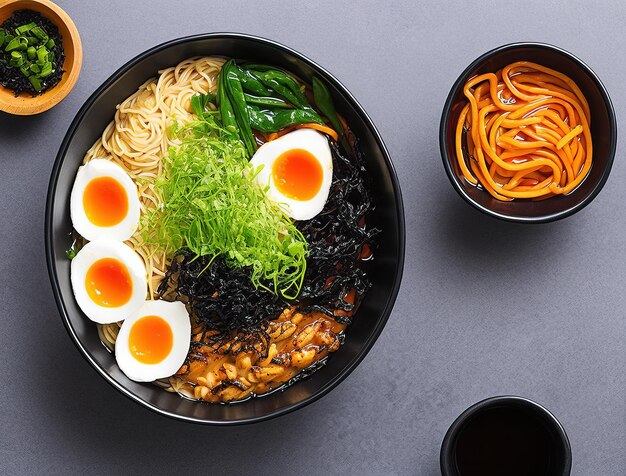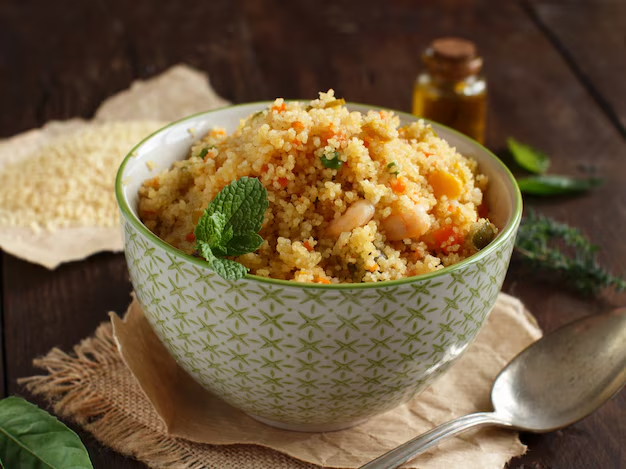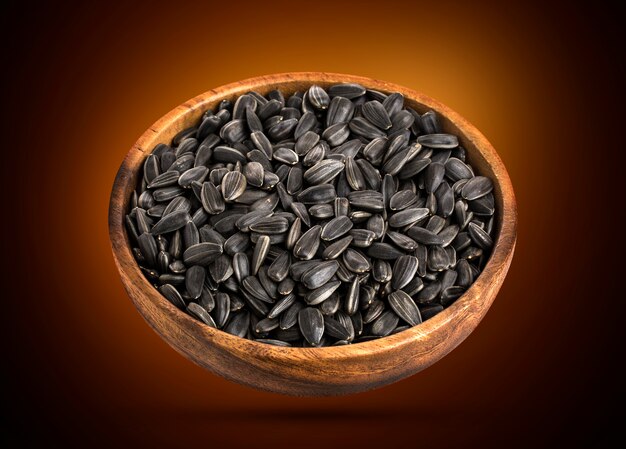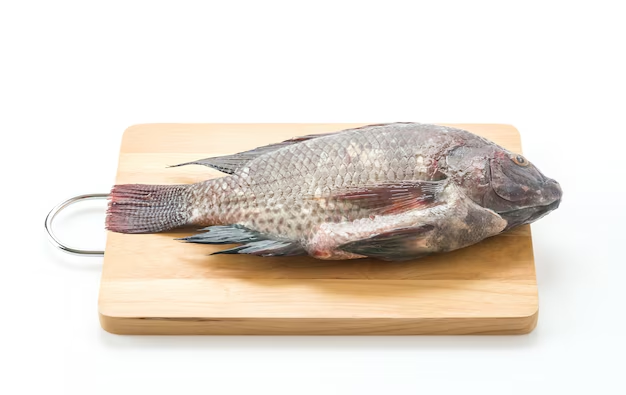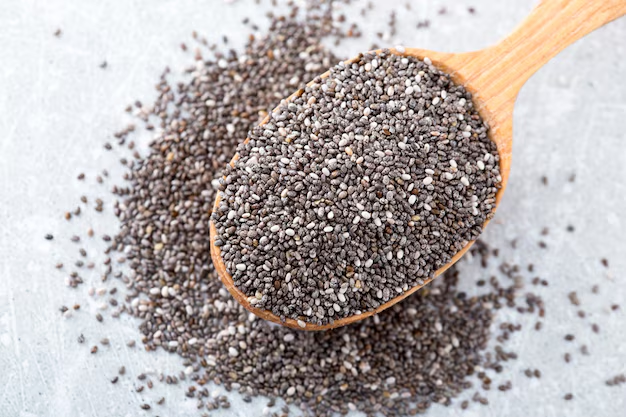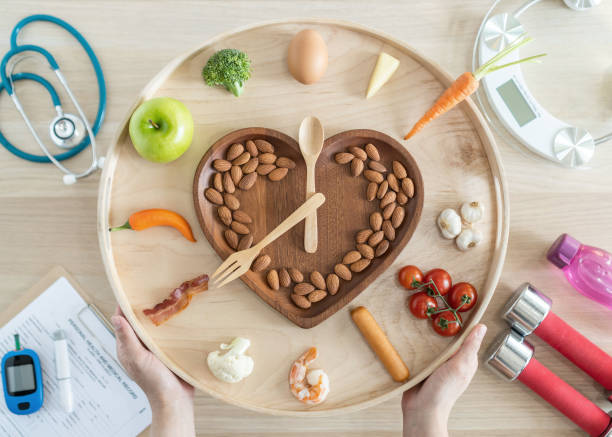Ramen is a beloved dish worldwide, particularly in the USA. From conventional Japanese bowls to handy on the spot noodles, ramen affords numerous flavors and textures. However with its rising reputation comes a big query: Is ramen wholesome? Whereas it’s undeniably scrumptious, its dietary worth and potential well being issues spark debate. Let’s dive into what ramen is, its dietary profile, and the well being implications of frequent consumption.
What Is Ramen?
Ramen is a noodle-based dish originating from Japan. It’s a comforting meal with a wealthy broth, noodles, and toppings. Over time, it has developed into completely different kinds to go well with world tastes.
Conventional Japanese Ramen vs. Instantaneous Noodles
- Conventional Ramen: Made with contemporary substances, together with hand-pulled noodles, meat or vegetable broth, and toppings like boiled eggs, seaweed, and greens.
- Instantaneous Ramen: A fast, packaged possibility made with pre-fried noodles and seasoning packets. Whereas handy, it typically incorporates preservatives and components.
Dietary Profile of Ramen
Ramen’s dietary worth is determined by the sort consumed. Conventional ramen is extra balanced, whereas on the spot noodles are sometimes much less wholesome.
Calorie Content material
- Conventional Ramen: Incorporates round 500–700 energy per serving, relying on the broth and toppings.
- Instantaneous Ramen: A single bundle can vary from 350–500 energy, primarily from noodles and oil.
Macronutrients
- Carbohydrates: Each conventional and on the spot ramen are excessive in carbs, primarily from wheat-based noodles.
- Proteins: Conventional ramen consists of protein from eggs, meat, or tofu. Instantaneous ramen typically lacks enough protein until further substances are added.
- Fat: Instantaneous ramen is greater in unhealthy fat as a consequence of fried noodles and oil-based flavorings.
Micronutrients
- Conventional ramen incorporates important nutritional vitamins and minerals from contemporary toppings and broth.
- Instantaneous ramen lacks vital micronutrients until fortified.
Sodium Ranges
One of many largest issues with ramen is its sodium content material.
- Conventional Ramen: Incorporates 1,000–1,800 mg of sodium per serving.
- Instantaneous Ramen: Packs a staggering 1,500–2,200 mg per bundle, contributing to extreme every day consumption.
Well being Issues Related to Ramen Consumption
Regardless of its reputation, ramen has some potential well being dangers, significantly when consumed commonly.
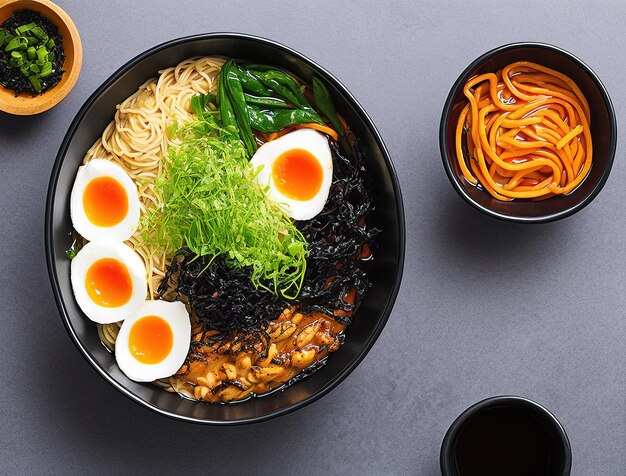
Excessive Sodium Consumption
Instantaneous ramen’s excessive sodium content material can result in well being issues reminiscent of:
- Hypertension: Elevated sodium raises blood strain.
- Cardiovascular Ailments: Elevated threat of coronary heart assaults and strokes.
| Sodium Content material Comparability | Conventional Ramen | Instantaneous Ramen |
| Common Serving | 1,000–1,800 mg | 1,500–2,200 mg |
| Really useful Each day Restrict | 2,300 mg | Usually exceeded |
- Saturated Fat and Preservatives
- Many on the spot ramen merchandise include saturated fat, which may:
- Hurt liver well being.
- Result in weight acquire and excessive ldl cholesterol.
- Preservatives like TBHQ (tertiary butylhydroquinone) could trigger long-term well being results if consumed in extra.
Low Dietary Worth
- Instantaneous ramen affords minimal important vitamins reminiscent of nutritional vitamins, minerals, and fiber.
- Overreliance on on the spot noodles could lead to nutrient deficiencies.
Metabolic Syndrome Danger
- Research have linked frequent ramen consumption to metabolic syndrome, significantly in ladies. This consists of:
- Elevated waist circumference.
- Elevated blood sugar ranges.
- Increased threat of diabetes and coronary heart ailments.
Balancing Ramen in Your Weight loss plan
Whereas ramen has its drawbacks, moderation and sensible selections could make it a part of a nutritious diet.
- Go for Conventional Ramen: Select freshly ready bowls with a wide range of greens and lean proteins.
- Restrict Instantaneous Ramen Consumption: In the event you will need to have on the spot noodles, think about:
- Including greens like spinach or broccoli.
- Together with a boiled egg or tofu for protein.
- Decreasing the seasoning packet to chop sodium.
Associated to Learn: Rice Noodles vs Egg Noodles: Dietary Variations, Energy, and Well being Advantages
Can Ramen Be A part of a Wholesome Weight loss plan?
Ramen, a flavorful and satisfying dish, has gained world reputation for its comfort and flexibility. Nonetheless, many individuals ponder whether ramen can match right into a nutritious diet. The reply lies carefully, ingredient selections, and preparation strategies. Let’s discover how one can get pleasure from ramen whereas sustaining a balanced and nutritious food plan.
Moderation and Portion Management
- Consuming on the spot ramen regularly can result in extreme sodium and calorie consumption.
- Overconsumption could improve the chance of well being points like hypertension and weight acquire.
Apply Portion Management
- Keep on with a single serving dimension.
- Pair ramen with nutrient-dense facet dishes like salads or steamed greens to keep away from overeating.
Selecting More healthy Choices
Not all ramen is created equal. Making smarter selections on the grocery retailer can considerably affect its dietary worth.
Low-Sodium or Complete Grain Varieties
- Many manufacturers supply low-sodium variations of on the spot ramen. These choices assist scale back salt consumption.
- Go for whole-grain noodles for added fiber, which promotes higher digestion and satiety.
Do-it-yourself Ramen Recipes
- Making ready ramen from scratch permits full management over the substances.
- Use contemporary greens, lean proteins, and home made broth to create a nutrient-packed bowl.
Tricks to Make Your Ramen More healthy
Enhancing the dietary content material of ramen is straightforward with a couple of modifications.
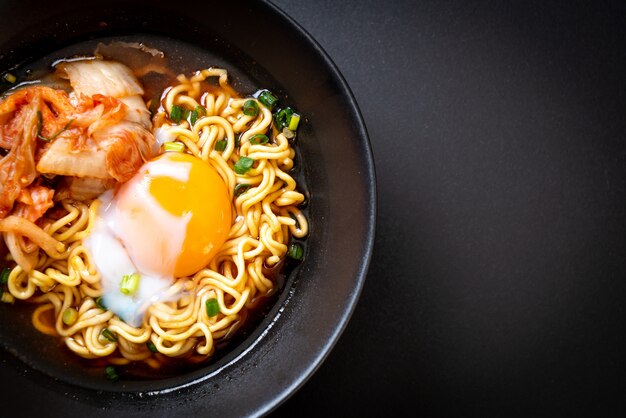
Add Greens
Incorporate contemporary or frozen greens like:
- Carrots, broccoli, and spinach: Wealthy in nutritional vitamins and minerals.
- Mushrooms: Present antioxidants and a meaty texture.
- Corn and inexperienced onions: Add taste and visible enchantment.
Embrace Lean Proteins
Increase the protein content material by including lean meals:
- Rooster: A lean supply of protein to maintain you full.
- Tofu: Good for a vegetarian possibility with important amino acids.
- Eggs: A fast and straightforward means so as to add protein and wholesome fat.
Use Low-Sodium Broth
- Exchange the seasoning packet with a home made or store-bought low-sodium broth.
- Taste with pure substances like garlic, ginger, or soy sauce.
Restrict Consumption of Broth
- The broth typically incorporates a lot of the sodium. Keep away from consuming it completely or devour it sparingly.
Options to Instantaneous Ramen
For these seeking to keep away from on the spot ramen completely, think about these more healthy substitutes.
Soba or Udon Noodles
- These conventional Japanese noodles typically have a greater dietary profile.
- Soba noodles, created from buckwheat, are excessive in fiber and protein.
- Udon noodles are tender and could be paired with contemporary, gentle broths.
Zucchini Noodles (Zoodles)
- A low-carb various, excellent for these watching their caloric consumption.
- Pair with a flavorful broth and lean proteins for a healthful meal.
Shirataki Noodles
- These calorie-free noodles are created from konjac yam.
- Ultimate for people managing their weight or following a ketogenic food plan.
Conclusion
Ramen can completely be a part of a nutritious diet when consumed thoughtfully. The secret’s moderation, making more healthy ingredient selections, and getting ready it with contemporary, nutrient-dense additions. By selecting conventional or home made choices and incorporating greens, proteins, and low-sodium broth, ramen can rework from a handy snack to a balanced meal.
Keep in mind, your well being journey is about knowledgeable selections and steadiness. Take pleasure in ramen responsibly and creatively!
FAQs
1. Is conventional ramen more healthy than on the spot ramen?
Sure, conventional ramen is often more healthy. It makes use of contemporary substances, reminiscent of broth created from scratch, hand-pulled noodles, and nutritious toppings like greens and eggs. Instantaneous ramen, then again, typically incorporates excessive sodium, unhealthy fat, and preservatives.
2. Can I eat on the spot ramen daily?
It’s not beneficial to eat on the spot ramen every day as a consequence of its excessive sodium and low dietary worth. Frequent consumption can improve the chance of hypertension, cardiovascular points, and nutrient deficiencies. Intention for infrequent indulgence whereas balancing your food plan with more healthy meals.
3. How can I make on the spot ramen extra nutritious?
You’ll be able to improve the dietary profile of on the spot ramen by:
- Including greens like spinach, carrots, or broccoli.
- Together with lean proteins like boiled eggs, grilled hen, or tofu.
- Utilizing solely half of the seasoning packet or changing it with low-sodium broth.
4. Are there low-carb ramen choices?
Sure, there are low-carb options like zucchini noodles (zoodles) or shirataki noodles. These choices are nice for these managing their weight or following low-carb diets whereas nonetheless having fun with a ramen-like expertise.
5. What are the dangers of consuming an excessive amount of ramen?
Consuming extreme quantities of ramen, particularly on the spot noodles, can result in:
- Excessive sodium consumption, rising the chance of hypertension.
- Weight acquire as a consequence of unhealthy fat and energy.
- Nutrient deficiencies, as on the spot ramen lacks important nutritional vitamins and minerals.
Airways Reservation Desk



